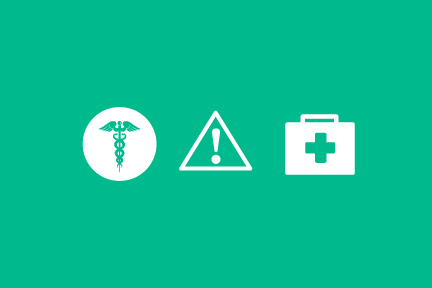Medical Malpractice: Misdiagnosis or Failure to Diagnose

Medical malpractice can occur in a variety of ways, including misdiagnosis or failure to diagnose a patient with a health condition.
What Constitutes Misdiagnosis or Failure to Diagnose?
Misdiagnosis can occur when a doctor or other health professional fails to listen to a patient’s complaints, fails to ask the patient pertinent questions that might uncover the condition, fails to conduct an adequate physician examination, misinterprets test results, x-rays or other scans, fails to order appropriate tests, fails to refer a patient to a specialist, and more.
Failure to diagnose arises when a doctor misses a diagnosis completely, such as when a doctor doesn’t see a tumor which appears on a patient’s x-ray.
What Does a Plaintiff Need to Prove in a Misdiagnosis or Failure to Diagnose Case?
A patient bringing a failure to misdiagnose case must prove three things:
1. That there was a doctor-patient relationship;
2. That the doctor did not meet the standard of care in diagnosing the patient's condition; and
3. That the doctor's failure to diagnose or misdiagnosis was the proximate cause of an actual injury or illness suffered by the plaintiff.
Since the first element is usually quite straightforward and easy to prove, most of these medical malpractice cases focus on the last two elements – the standard of care to be applied, and whether the plaintiff’s injury was caused by the doctor's misdiagnosis or failure to diagnose.
Standard of Care
The plaintiff has the burden of proving that the doctor did not meet the standard of care. To do so, the plaintiff will need to provide the opinion of an expert in the field who can testify that another doctor practicing in the same or similar field would have diagnosed the plaintiff properly.
The standard of care in a medical malpractice case is usually what is considered “good and accepted medical practice,” at the time the doctor treated the patient. In other words, if there is a new diagnostic method that would have helped the doctor reach the correct diagnosis, but it was not generally accepted or in wide use at the time of the original diagnosis, the doctor will likely not be held liable.
Causation
Even if a doctor has not met the standard of care and misdiagnosed the patient as a result, the doctor still may not be liable for committing malpractice unless it can be proven that the failure to diagnose or misdiagnosis put the plaintiff in a worse position. This is the element of causation.
To prove a medical malpractice cases for failure to diagnose, the patient must not only have symptoms of the medical condition, but also must be able to demonstrate that an actual injury occurred, and that the patient is in a worse medical condition as a result of the doctor’s failure to diagnose or misdiagnosis. The plaintiff must show that he or she is more ill or required more medical treatment than they would have required if the doctor had made the correct diagnosis initially.
In other words, if the physician had diagnosed the patient correctly, it must be shown that the patient would be in a better position if the illness were diagnosed earlier or if treatment had been provided.
Additional Elements to Be Proven
In some states, if the plaintiff was misdiagnosed in an emergency by a first responder, such as a paramedic, the plaintiff may have to prove an additional element to prevail in a misdiagnosis medical malpractice case. In those cases, the plaintiff may be required to prove that the first responder was reckless or acted intentionally to harm the plaintiff. In other states, a plaintiff who is misdiagnosed in a hospital emergency situation must also show a higher level of proof against the doctor and demonstrate that the doctor acted with gross negligence.
If you or a loved one received a misdiagnosis from a doctor and were injured as a result, use our site to find a medical malpractice attorney who can help.
Additional Medical Malpractice Resources
Do You Need An Attorney?
If so, post a short summary of your legal needs to our site and let attorneys submit applications to fulfill those needs. No time wasted, no hassle, no confusion, no cost.

